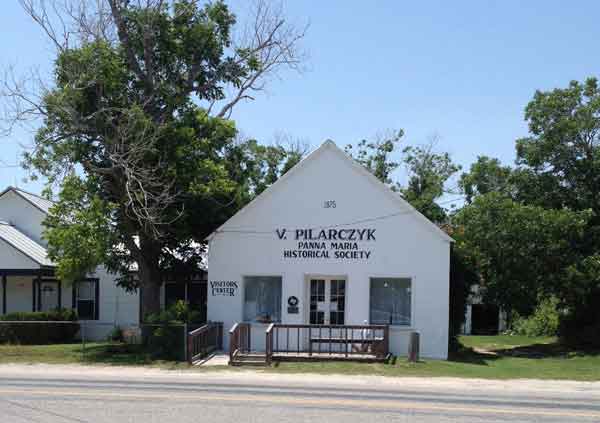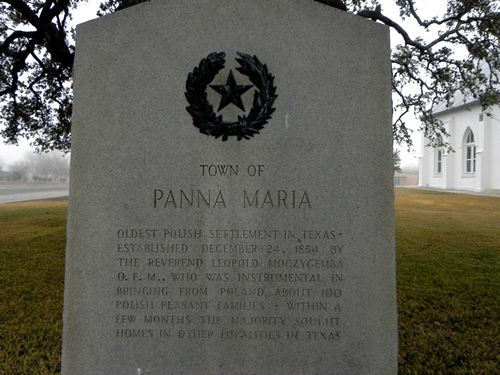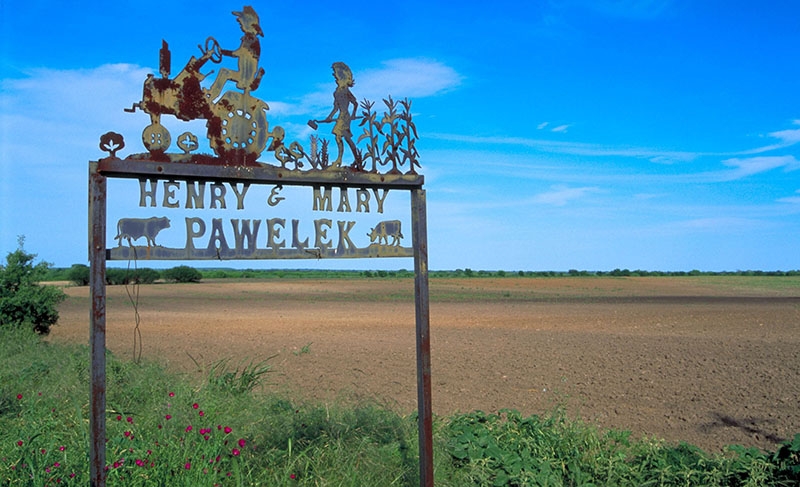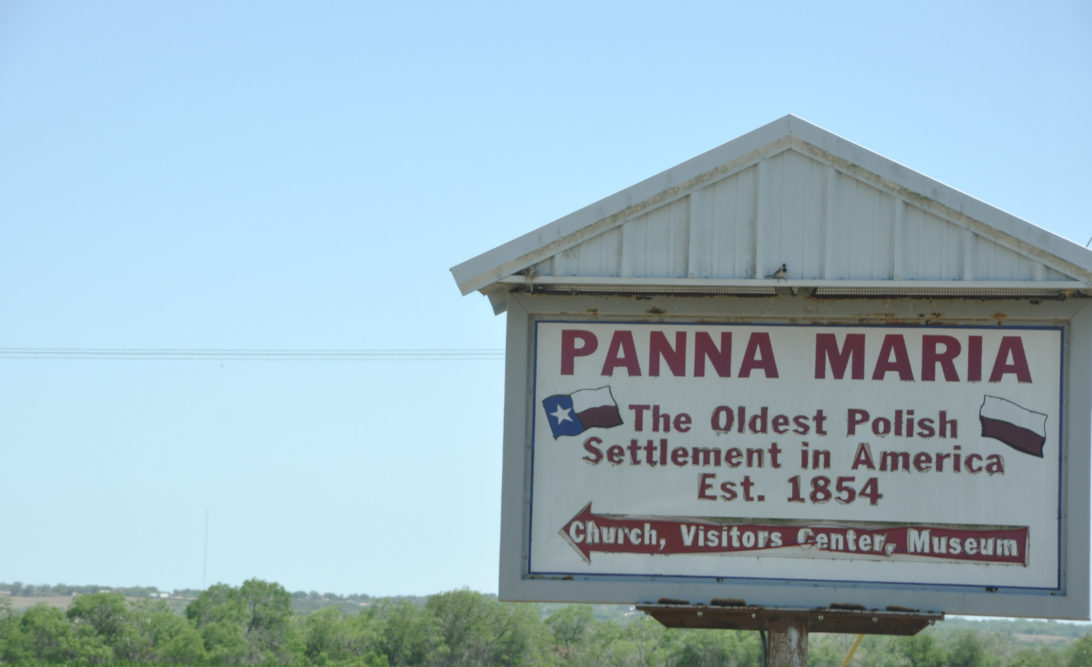
May 9, 2022
Polish traces in the world. USA – part 3 – from Silesia to Texas
Continuing our journey following the footsteps of Polish settlers in America I found my way to Texas. I briefly described the beginnings of this first Polish settlement, but, due to a very important anniversary, I would like to stop at that place a little longer. Most of the early emigrants to the United States settled in Texas; Hamtramck, Michigan; and the Chicago area. Emigration was minimal until 1854, when Poles from Silesia began settling in Texas. A great wave of Polish emigration started in the 1870s.
Reviewing the archival issues of the Polish periodical “Dziennik Związkowy (Chicago) I came across a very interesting article from June 2004 describing the 150th anniversary of the Polish settlement of Panna Maria and decided to bring this story to you, because it really is worth knowing how our ancestors were conquering America.
Our story begins in the mid-nineteenth century, these were very hard times for Poland and Poles. After three partitions, the invaders led to the fact that Poland ceased to exist on the map of Europe. Brutal repression and persecution led to the Poles being forced to emigrate abroad. The purpose of emigration was mainly the European countries, but also America and the distant United States. No less important reason for leaving Poland was unemployment. (does not something remind us (-:)
In the villages one could feel overpopulation, for these reasons large-scale emigration flourished, the beginning of which dates back to 1840. Particularly as a mass phenomenon, permanent and seasonal emigration began several years after the January Uprising and lasted until the outbreak of World War II. The first groups of immigrants came to the United States from Silesia, and then people from other parts of Poland, partitioned by the partitioned Poland, came to them.
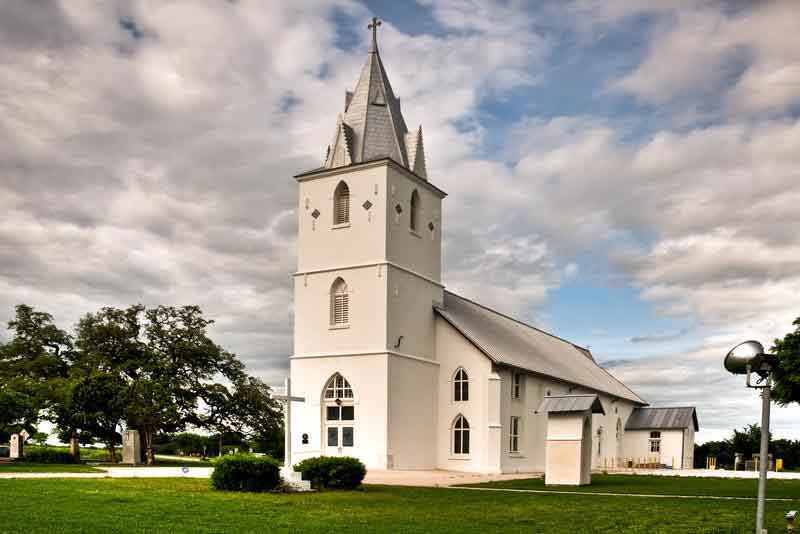
At the end of the current year (2018) it will be 164 years since the priest Leopold Moczygęba in 1854 founded together with the first emigrants, a Polish settlement in the United States. On the land of Washington, priest Moczygęba arrived two years earlier in 1852 as a young, 28-year-old preacher, he came from Silesia, from the village of Wielka Płużnica and after graduating from schools in Italy went to the semi-horrible in those days Texas, a very picturesque but sparsely populated land. It was probably then when he saw the vast empty lands he came to think of bringing his fellow countrymen here from the great misery and overpopulation of Silesia. He thought that in Texas people who are not afraid of hard work will be able to live in peace and prosperity. He described it in letters to the country and the result was that the peasants from Upper Silesia sold their farms along with all the equipment and set out on their way to the United States. Among them were four brothers, priest Moczygęba. First, by train to the German port of Bremen and from there, at the end of September, by boat “Weser” sailed across the Atlantic to the United States. They sailed for 9 weeks and finally reached the port of Galveston, Texas.
On land, with a hope for a better tomorrow in the new homeland, over one hundred families from Upper Silesia have left. On their further journey, for over 200 miles, they traveled on foot to the place chosen by Father Moczygęba at the confluence of two rivers; Cibolo and San Antonio, a picturesque land resembling the Mazovian plain, but so different from home. They arrived there on a special day on Christmas Eve December 24, 1854. Here, under the great oak tree, the first Holy Mass was celebrated. and then the place was called Panna Maria. The beginnings of the settlement were very difficult, the first houses were primitive, built of wood and clay, and the roofs were braided of tall grass growing around. The surrounding nature did not resemble Polish, attacks by Indians, disease, ignorance of English or Spanish, great floods in 1855-1856, discouraged many emigrants. Some because of these difficulties, feeling that they are not accepted by the local population, left hot Texas, settling in more northern locations. This is how the sister Polish colonies were created, such as; Czestochowa, Kosciusko, Pulaski and Falls City. Others, together with other family members, went to places such as: Bandera, Cotula, St. Hedwig, Mayersville or Yorktown in search of work and better living conditions. Some settled in the larger cities of Texas: San Antonio, Houston, Austin. One small group of dissatisfied set off to Kansas, settling in Kansas City, and there were those who even reached St. Louis in Missouri.
Others, however, undeterred by the adversities of their fate, stayed on the spot building the foundations for the first Polish settlement. The first thing that was planned to do was to build a Polish Church, which despite many difficulties and lack of funds was built and dedicated on September 29, 1856. The Polish settlement grew as more immigrant groups arrived from Silesia, at the end of 1855, a group of 700 people arrived. Then, despite the difficult conditions prevailing in Texas to the village of Panna Maria for the following years, although the smaller and smaller groups of Silesian emigres arrived. The third group of 500 people came in 1856, in 1857 about 50 people, and in 1858 only 30 people, and together with this smallest group came a church bell from Silesia. The second important institution that was established in the settlement was a school where children could learn to read and write. Her plans were taken in 1867 and construction was completed in 1868. It was for sure the first Polish school on the American continent, she was named after Saint. Joseph. This first building served educational purposes until 1989, when it was closed. Today, in this place is the Museum of Historical Society. There are valuable souvenirs of our Polish heritage. We can see settlers’ clothing, tools and household equipment, hand-made items for the church service, books and teaching aids used in the Polish school of Saint. Joseph.
There is no doubt that Panna Maria is an important part of the history of Poles in America. We should remember this story, worship it and preserve it for posterity. Our goal should be to maintain and renovate the Museum, which is decorated in the former school of St. Joseph, church and other historic buildings such as F.V. Snoga from 1855 or the first building in the village of Panna Maria made of bricks – Pilarczyk’s house from 1875. The Polish language is cultivated in the parish and town. You can still hear the dialect of Silesia used by older residents, religious traditions and Polish customs are continued. The influx of new Polish emigrants was particularly marked in post-Solidarity times. They run Polish language schools, promote Polish culture. Already 64 years ago, on October 28, 1954, the first group of the Society which focused on the local Poles, was established. In connection with the 150th anniversary of the establishment of the first Polish colony in Panna Maria, Texas, great celebrations and celebrations were held in Houston and Panna Maria, and on 11 and 12 December 2004 also in Panna Maria and San Antonio. The story of the first Polish settlers in Texas can be described as “they came to look for freedom and, thanks to hard work, achieved comfort and prosperity.
